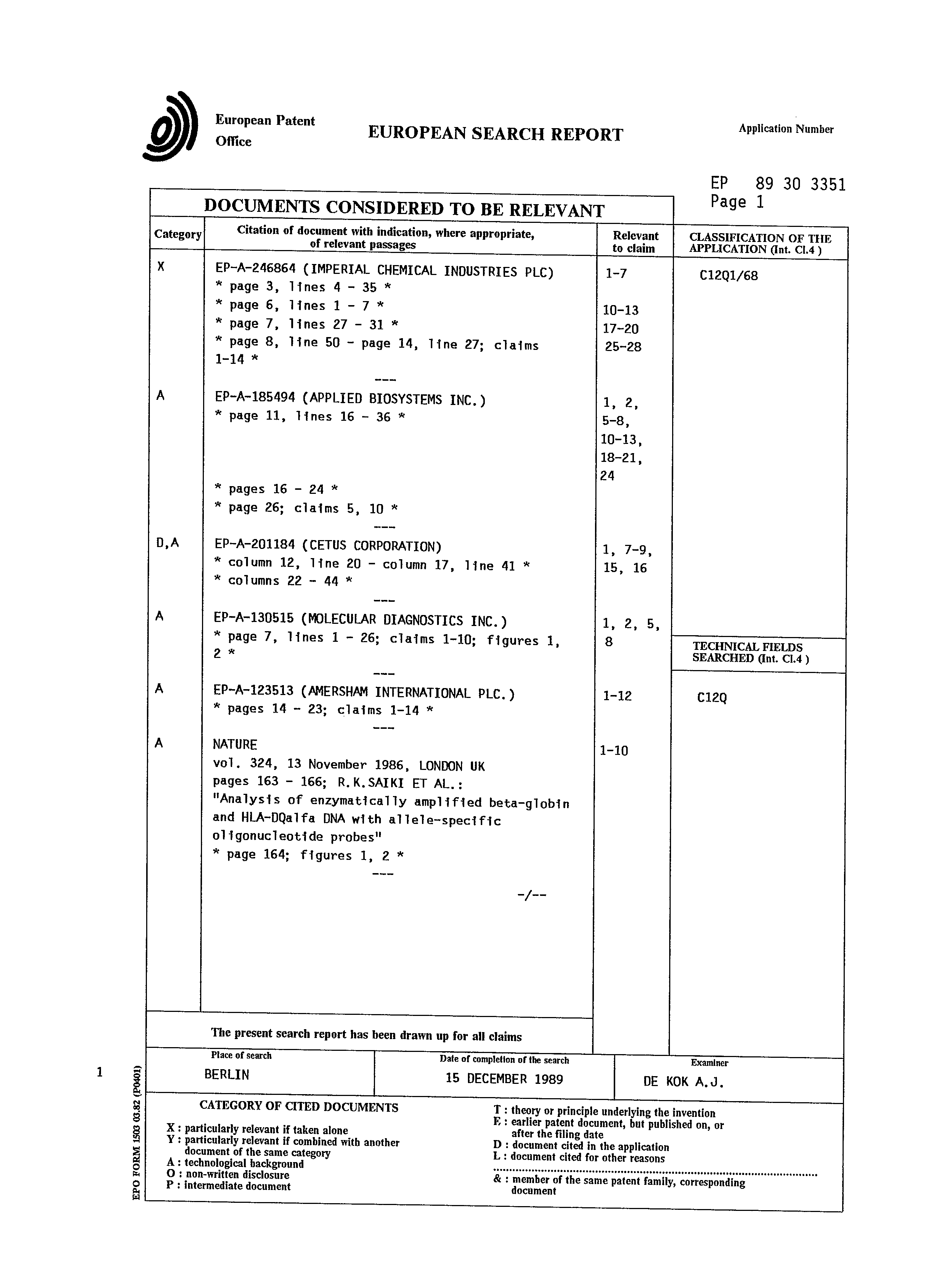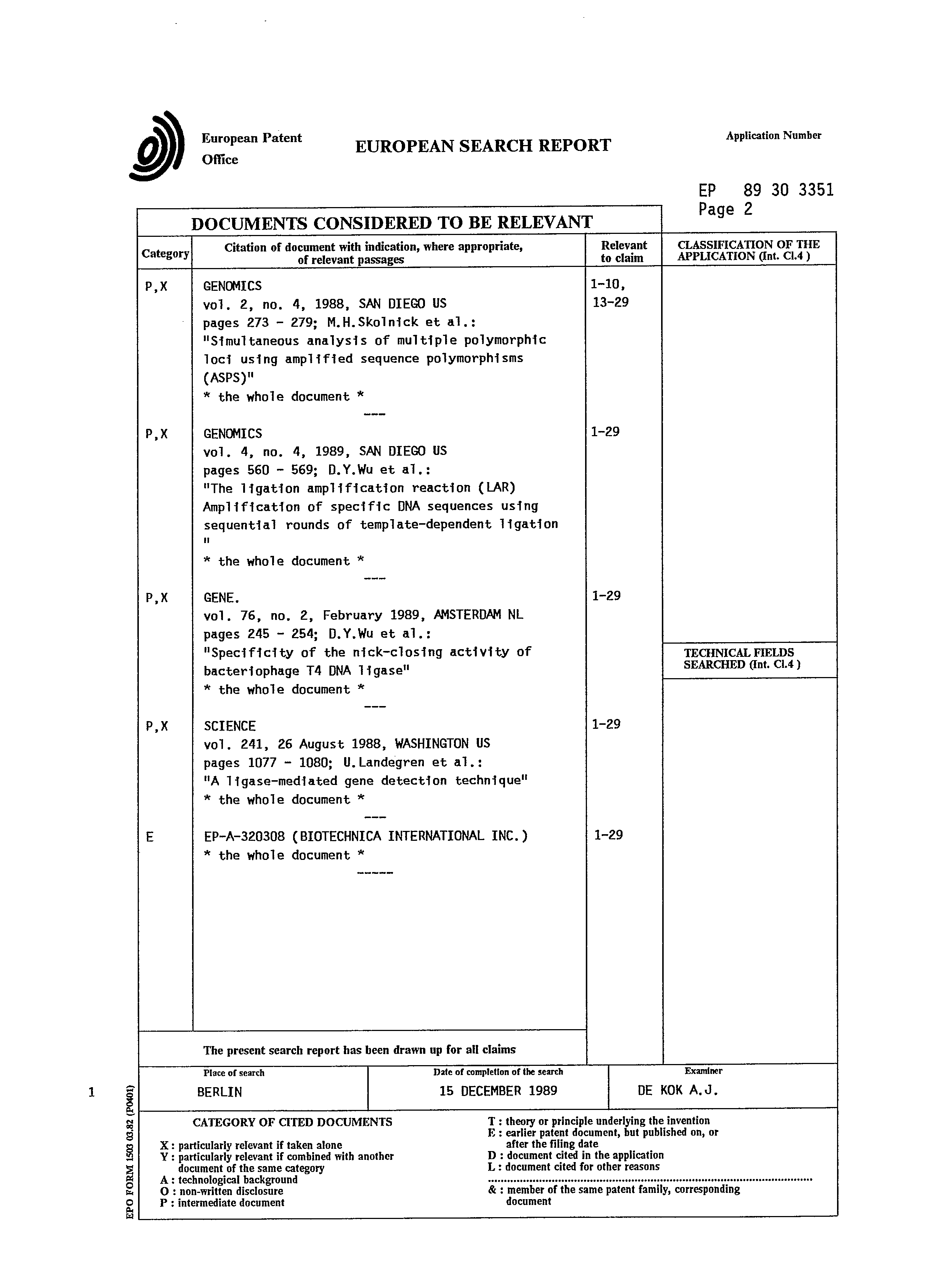| (19) |
 |
|
(11) |
EP 0 336 731 A3 |
| (12) |
EUROPEAN PATENT APPLICATION |
| (88) |
Date of publication A3: |
|
28.02.1990 Bulletin 1990/09 |
| (43) |
Date of publication A2: |
|
11.10.1989 Bulletin 1989/41 |
| (22) |
Date of filing: 05.04.1989 |
|
| (51) |
International Patent Classification (IPC)4: C12Q 1/68 |
|
| (84) |
Designated Contracting States: |
|
DE FR GB IT |
| (30) |
Priority: |
06.04.1988 US 178377
|
| (71) |
Applicant: CITY OF HOPE |
|
Duarte
California 91010-0269 (US) |
|
| (72) |
Inventor: |
|
- Wallace, Bruce R.
South Pasadena, CA 91030 (US)
|
| (74) |
Representative: Marchant, James Ian et al |
|
Elkington and Fife,
Prospect House,
8 Pembroke Road
Sevenoaks,
Kent TN13 1XR
Sevenoaks,
Kent TN13 1XR (GB) |
|
| |
|
| (54) |
Method of amplifying and detecting nucleic acid sequences |
(57) A method for detecting point mutations in nucleic acid template and amplifying at
least one specific nucleic acid sequence contained in a sample of nucleic acid template
wherein each nucleic acid consists of either one strand or two separate complementary
strands, comprising treating the strands with at least one of two sets of two different
relatively short oligonucleotides each of which sets (i) is complementary to and therefore
will hybridize to at least a portion of the template sequence of at least one of the
strands and (ii) flanks both sides of a designated target base contained within the
specific nucleic acid sequence, such that one of the two short oligonucleotides in
each set of oligonucleotides contains a base at one of its ends that is complementary
to one of the target bases of said template under conditions such that the two short
oligonucleotides of each of the sets will mutually ligate if the target base pair
exists in the template, the ligation occurring between the terminal base of one of
the complementary oligonucleotides which is complementary to one of the target bases
and a terminal base of another complementary oligonucleotide of the same set.


